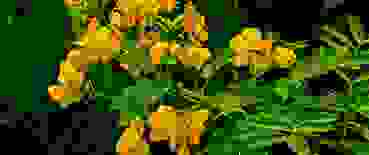
Senna (Senna alexandrina)
The senna plant grows leaves and fruits which are used for medicinal purposes, Both parts of the plant are used for short-term treatment of occasional constipation, and senna can additionally be used for bowel cleansing before clinical procedures.
The two original kinds of senna (Cassia senna L. and Cassia angustifolia Vahl; today grouped as Senna alexandrina Mill.) used to make remedies are now mass-cultivated for medicinal purposes – primarily for their laxative properties. Some senna-based medicinals have a long tradition in Northern Africa, where only Cassia senna used to be cultivated. The leaves of the plant were usually shipped from the port of Alexandria on the Nile delta to places all over the world. At the time, this medicinal was referred to as “Egyptian senna”. The fruits were mostly collected from Cassia angustifolia, which was cultivated in the south of India and mainly traded in the city of Tinnevelly (present-day Tirunelveli). This is why it was also called “Tinnevelly senna”.
Today, the leaves and fruits from both Cassia senna and Cassia angustifolia are used and the two varieties are grown in various tropical and subtropical regions. Dried senna leaves and fruits are drunk in tea or consumed in products containing a standard-regulated senna extract. These can help with occasional constipation in the short term.
Occurrence and distribution of senna
The senna plant belongs to the legume family (Caesalpiniaceae). Senna has a long tradition as a medicinal plant. Paracelsus recommended senna as a laxative in combination with leek and wormwood. The senna plant is commonly found in hot and dry regions of Africa and Asia.
Appearance of senna
Its stem grows to a height of one to two metres and it has pinnate leaves and yellow flowers. The fruits grow in husks that are around five centimetres in length.
Active ingredients and effects of senna
The dried leaves and dried fruits are used for the medicinal substances they contain. Both have similar effects, but the fruits are considered to have a milder effect. The active ingredients are anthranoids (which are also called anthraquinones). These are classified as sennosides A to F. Standard-regulated extracts taken from the leaves or fruits are adjusted to a specific quantity of sennosides. The two drugs also contain mucilage, flavonoids and a small amount of essential oil.
Sennosides are what are referred to as “pro-drugs”, meaning that they only become effective once they are converted to anthrones in the colon. Sennosides and anthrones are not absorbed into the bloodstream and only release their effect in the colon. Anthrones inhibit water absorption from the intestinal contents and stimulate movement of the bowel muscles (peristalsis), making the stool softer and more voluminous and speeding up passage through the colon.
Senna as a medicinal product
The leaves and fruits of the senna shrub can be brewed into a drinkable tea. They are often among the ingredients in laxative tea blends. Various shop-bought medicinals contain extracts from the senna fruits and leaves in standard dosages.
Any preparations should only be taken for a short period of time (one to two weeks maximum) without medical advice, for example, to treat cases of acute constipation or when the stool needs to be softened due to rectal problems, such as haemorrhoids or anal tearing.
This is general information. For individual advice, please contact a specialist.
Modern herbal medicine
Modern herbal medicine (phytotherapy) combines centuries-old knowledge with the latest scientific findings.
Details

